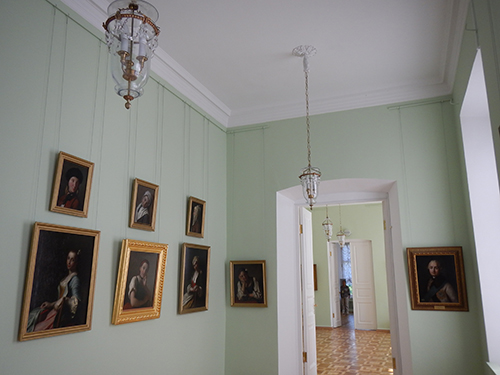Room of Pietro Antonio Rotari

The celebrated Italian painter Pietro Antonio Rotari (1707 – 1762) is best known in the arts for a multitude of exquisite “female heads” that became so characteristic of the Rococo decorative style. Very prolific, he produced hundreds of intimate portraits of almost identical size; a great many of them were placed in country palaces in Peterhof, Oranienbaum, and Gatchina.
Catherine II gifted a collection of Rotari’s works to Count Orlov. More of his works entered the Gatchina holdings up until the 1920s. The Rotari Room was introduced at the Gatchina Palace as part of the palace’s remodeling under Nicholas I, with works by the famous Italian being its main decorative feature.
On display in the room are both his well-known heads and portraits of princes of Saxony, the sons of Augustus III. Once the restoration of the Rotari room is completed, Rotari’s works will resume their original places.
See on interactive plan

The celebrated Italian painter Pietro Antonio Rotari (1707 – 1762) is best known in the arts for a multitude of exquisite “female heads” that became so characteristic of the Rococo decorative style. Very prolific, he produced hundreds of intimate portraits of almost identical size; a great many of them were placed in country palaces in Peterhof, Oranienbaum, and Gatchina.
Catherine II gifted a collection of Rotari’s works to Count Orlov. More of his works entered the Gatchina holdings up until the 1920s. The Rotari Room was introduced at the Gatchina Palace as part of the palace’s remodeling under Nicholas I, with works by the famous Italian being its main decorative feature.
On display in the room are both his well-known heads and portraits of princes of Saxony, the sons of Augustus III. Once the restoration of the Rotari room is completed, Rotari’s works will resume their original places.
See on interactive plan
